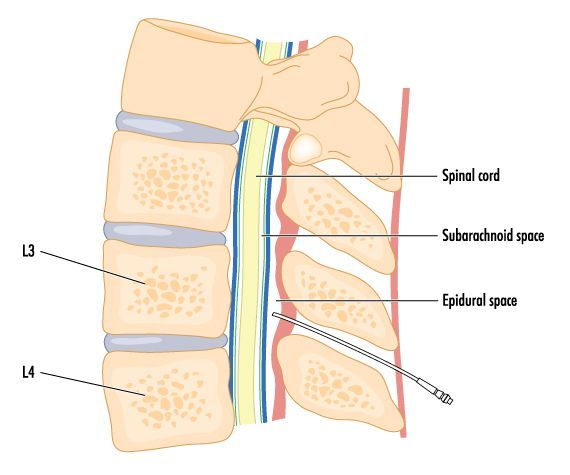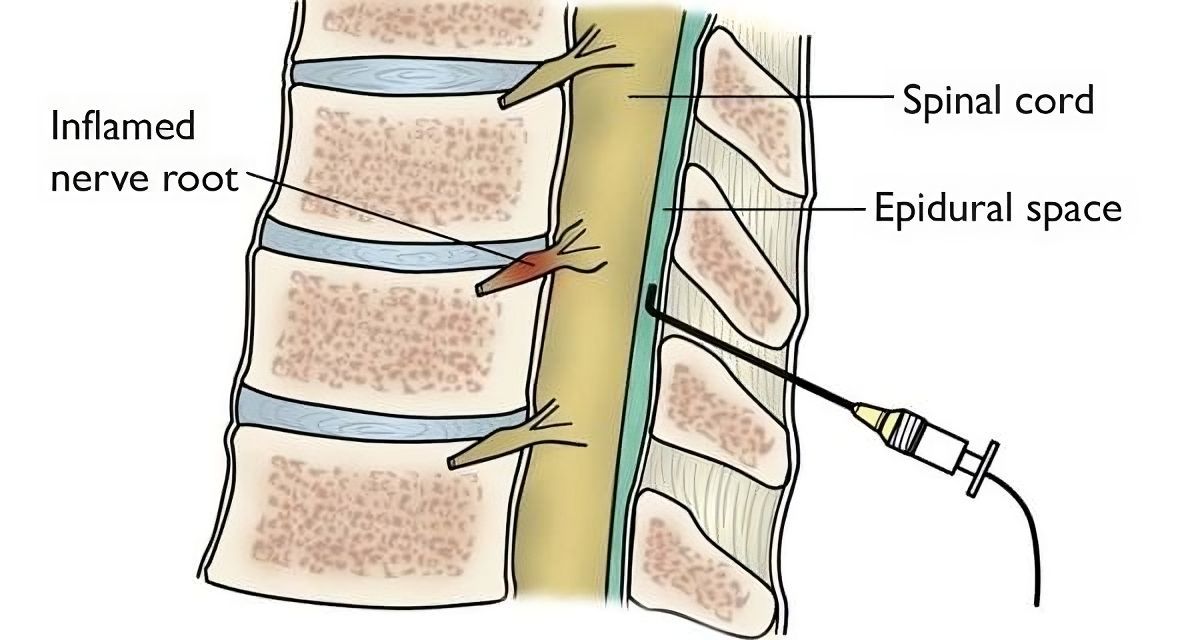Cervical Epidural Steroid Injection
Cervical Epidural Steroid Injection
A Cervical Epidural Steroid Injection is an outpatient procedure for treating neck, upper back, shoulder, and arm pain. This information has been provided by your doctor so you can better understand this procedure. Your doctor will make the best recommendation for your specific needs.
What Is The Epidural Space?
The dura is a protective covering of the spinal cord and its nerves. The space surrounding the dura is called the epidural space. In the neck it is called the cervical epidural space. The cervical nerves travel through this space.

What Causes Pain In The Epidural Space?
The cervical area of the spine has seven bones, called vertebrae. Soft discs found between these vertebrae cushion them, hold them together, and control motion. If a disc tears, chemicals inside may leak out. This can inflame nerve roots or the dura and cause pain. A large disc tear may cause a disc to bulge, inflaming or compressing nerve roots, inflaming the dura, and causing pain. Bone spurs, called osteophytes, can also press against nerve roots and cause pain.
How Do I Know If I Have Disc And Nerve Root Pain?
If you have pain in your neck or upper back your head or neck, you may have cervical disc and dural inflammation. If pain travels to your arm when you move your head or neck, you may have nerve root inflammation. Common tests such as MRIs can show disc bulges and nerve root compression, but may not show a torn and leaking disc. A cervical epidural injection may provide relief if disc problems, dural inflammation, or nerve root inflammation are causing your pain.

What Is A Cervical Epidural Steroid Injection?
In a cervical epidural steroid injection, a corticosteroid (anti-inflammatory medicine) is injected into the epidural space to reduce inflammation. Your physician may inject into the epidural space from behind; this is called an interlaminar injection. When it is done from the side where the nerve exists the spine, it is called a transforaminal injection. If the needle is positioned next to an individual nerve root, it is called a selective nerve root block.
What Happens During An Injection?
A local anesthetic will be used to numb your skin. The doctor will then insert a small needle directly into the epidural space. Fluoroscopy, a type of x-ray, will be used to ensure the safe and proper position of the needle. Dye will also be injected to make sure the needle is at the correct spot. Once the doctor is sure the needle is correctly placed, the medicine will be injected.
What Happens After An Injection?
You will be monitored for up to 30 minutes after the injection. When you are ready to leave, the staff will give you discharge instructions. You will also be given a pain diary. It is important to fill this out because it helps your doctor know how the injection is working. It will help to move your neck in ways that hurt before the injection, to see if the pain is still there, but do not overdo it. Take it easy for the rest of the day. You may feel immediate pain relief and numbness in your neck and arm for a period of time after the injection. This may indicate the medication has reached the right spot. Your pain may return after this short pain-free period, or may even be a little worse for a day or two. It may be caused by needle irritation or by the corticosteroid itself. Corticosteroids usually take two or three days to start working, but can take as long as a week. You can usually return to work the day after the injection, but always check with your doctor.
How Long Can I Expect Pain Relief?
The extent and duration of pain relief may depend on the amount of disc, dural, or nerve root inflammation. Other coexisting factors may be responsible for your pain. Sometimes an injection brings several weeks to months of pain relief, and then further treatment is needed. Other times, a single injection brings long-term pain relief. If your pain is caused by injury to more than one area, only some of your symptoms will be helped by a single injection.

Location:
6801 Mcpherson Road Suite 334 Laredo, TX 78041
Phone:
Hours:
Mon - Thu : 7:00am - 5:00pm
Fri : 7:00am - 4:00pm
